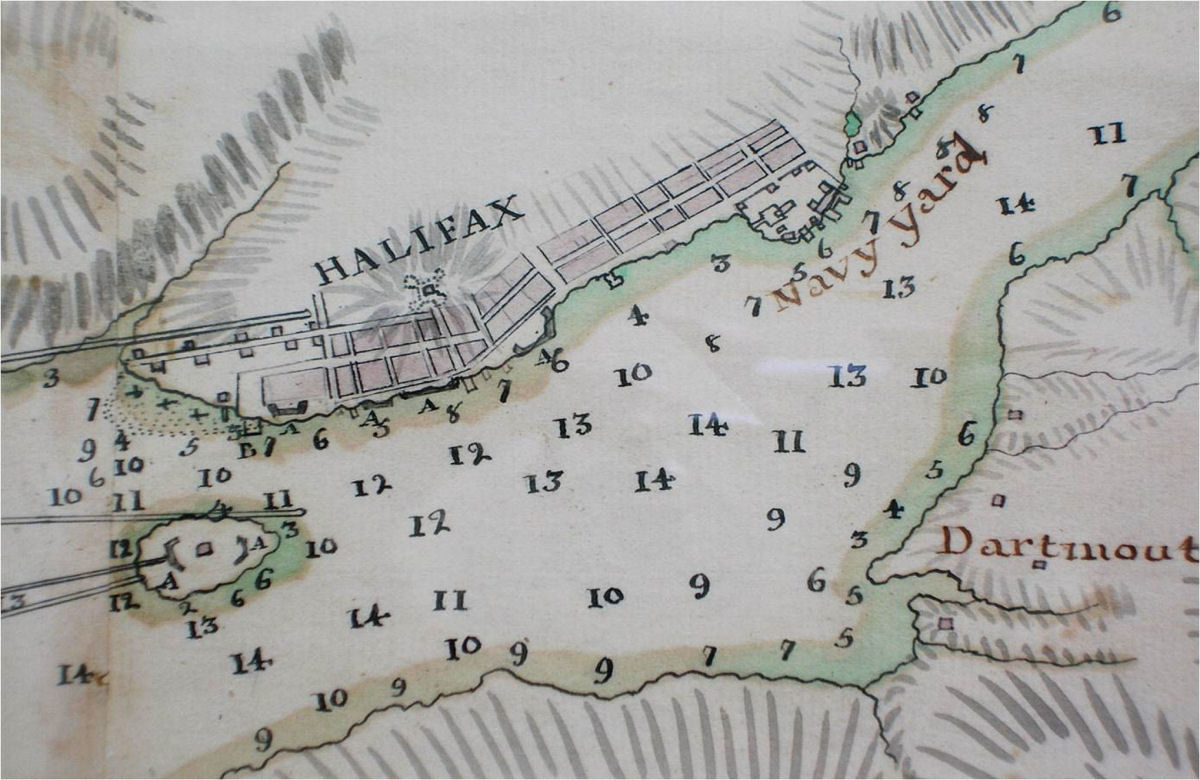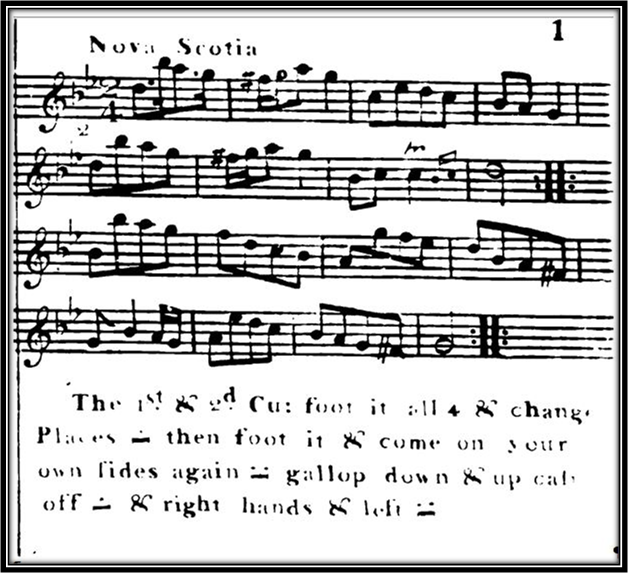The harbor of Halifax is without doubt one of the best in America sufficiently large to hold all the navy of England with great safety. Cook’s description of Halifax, Nova Scotia.

A draught of the harbour of Hallifax and the adjacent coast in Nova Scotia : survey’d by order of Commodore Spry / by James Cook, when master of His Majesty’s ship the Mars.
National Library of Australia. https://nla.gov.au/nla.obj-231254669/view
James Cook was based in Halifax, the capital of Nova Scotia for four years from 1758 to 1762. He arrived as the master of HMS Pembroke, one of the 17 ships in Admiral Boscawen’s Fleet sent to wrestle the fort of Louisbourg from the French. The fort was strategically placed to guard the sea route to Quebec via the St Lawrence River. When British forces captured Louisbourg, the way was opened for the siege of Quebec.

A view of Louisbourg, Cape Breton Island, Nova Scotia.
James Cook took part in the capture of Louisbourg from the French in 1758. The Royal Navy fleet launched the attack from their base in Halifax, Nova Scotia.
Credit: Pierre-Charles Canot [Public domain]
The Headquarters of the Royal Navy’s North America Station were based in Halifax. Founded in 1749, the settlement was less than 10 years old when Cook arrived. At the time it was described as a pleasant town with a magnificent harbour, well protected from north-westerly winds. It held a key position as the most northerly port on the Atlantic coast which remained open throughout winter when other harbours were frozen. During Cook’s posting, he developed his skills in navigation, astronomy, surveying and cartography; combining the four disciplines to become a highly accomplished naval hydrographer.

Cook’s skills in cartography were developed during his time in Nova Scotia, encouraged by his Captain, John Simcoe, and the guidance of leading military engineer and surveyor, Samuel Holland.
A map of Halifax and the Navy yard. Courtesy of Captain Cook Society.
Additionally, he acquired valuable experience in the importance of caring for his men. During the two month voyage across the Atlantic with Boscawen’s Fleet, twenty-two men on HMS Pembroke died from scurvy. This devastating disease caused by poor nutrition had a ruinous effect on seafarers, particularly on long voyages. This awareness caused Cook to provide fresh food to his crew whenever possible during his voyages into the Pacific and this had an enormously beneficial effect on the health of his men. Furthermore, during the harsh winters in Halifax, he noted that many men suffered and died from the biting cold through lack of warm clothing. There was no issue of suitable outfits, and the few clothes they owned often became wet and cold, with no dry replacements available. He ensured on his voyages of exploration that every man was provided with a good supply of appropriate clothing to withstand the freezing temperatures they encountered. And, just as Admiral Boscawen allowed dancing in the evenings, Cook encouraged his crew to entertain themselves and keep fit by dancing. [read more at Dancing for sailors.]

The British fleet bound for the siege at Quebec.
One of the ships depicted here may be Cook’s Pembroke.
Detail from https://commons.wikimedia.org
After Cook returned to England, his commander in Nova Scotia, Lord Alexander Colvill, penned a letter to the Admiralty with the recommendation:
… from my experience of Mr Cook’s genius and capacity, I think him well qualified for the work he has performed, and for greater undertakings of the same kind.
With this endorsement, James was brought to the attention of the Admiralty, leading to his appointment as lieutenant, and commander of the scientific expedition to observe the Transit of Venus and explore the South Seas.
 Nova Scotia in dance
Nova Scotia in dance
Nova Scotia played as a slow air by Isabel Clarke.
The dance Nova Scotia was published in 1751 and again in 1757 to celebrate the founding of Halifax. A typical dance of the period, it includes the instructions to “foot it” meaning to “set” or dance on the spot – this could be danced with balletic steps, such as a rigadoun, or with noisy percussive steps as in Irish, English clog, or modern tap dance. It is interesting to note that percussive step dancing is a distinct characteristic of the culture of Cape Breton Island, Nova Scotia.
It was probably danced quickly and energetically, but we liked the tune played as a slow air and have recorded it played on the harp. It may have been one of the dances mentioned in Admiral Boscawen’s letters as he wrote to his wife about the nightly dances on the Atlantic crossing. Perhaps it was danced on Cook’s ship to keep his crew healthy as they ploughed the south seas, or in a cultural exchange with the Pacific Islanders.

Dance instructions and score from
Johnson’s A Choice Collection of 200 Favourite Country Dances…Vol. 6th. London. 1751
Select Bibliography
Cameron-Ash, M. (2018). Lying for the Admiralty : Captain Cook’s Endeavour voyage Dural Delivery Centre, NSW: Rosenberg.
Carrington, H. (1967). The Life of Captain Cook. Great Britain: Sidgwick and Jackson.
Keller, R. M. (2006). Dance Figures Index: English Country Dances, 1650-1833. from The Colonial Music Institute https://www.cdss.org/elibrary/DFIE/Index.htm
Kindred, S. J. (2010). James Cook, sailing master in Halifax, Nova Scotia. Retrieved from https://www.captaincooksociety.com/home/detail/james-cook-sailing-master-in-halifax-nova-scotia
Robson, J. (2000). Captain Cook’s World. Maps of the Life and Voyages of James Cook R.N. . Australia: Random House.
Robson, J. (2009). Captain Cook’s War and Peace: The Royal Navy Years 1755-1768. Sydney: University of New South Wales Press.
Suthren, V. (2000). To Go Upon Discovery: James Cook and Canada, from 1758 to 1779. Toronto: Dundrun Press.
______________________________________________________________
This resource was created on the lands of the Gubbi Gubbi people.
We pay our respects to their elders past and present.
Sovereignty was never ceded.
______________________________________________________________
Header credits:
1. Portrait of Captain Cook by Nathaniel Dance-Holland [Public domain]
2. A jig on board by Cruikshank. Courtesy of The Lewis Walpole Library, Yale University
3. View of the South Seas by John Cleveley the Younger [Public domain]
______________________________________________________________
The information on this website www.historicaldance.au may be copied for personal use only, and must be acknowledged as from this website. It may not be reproduced for publication without prior permission from Dr Heather Blasdale Clarke.


